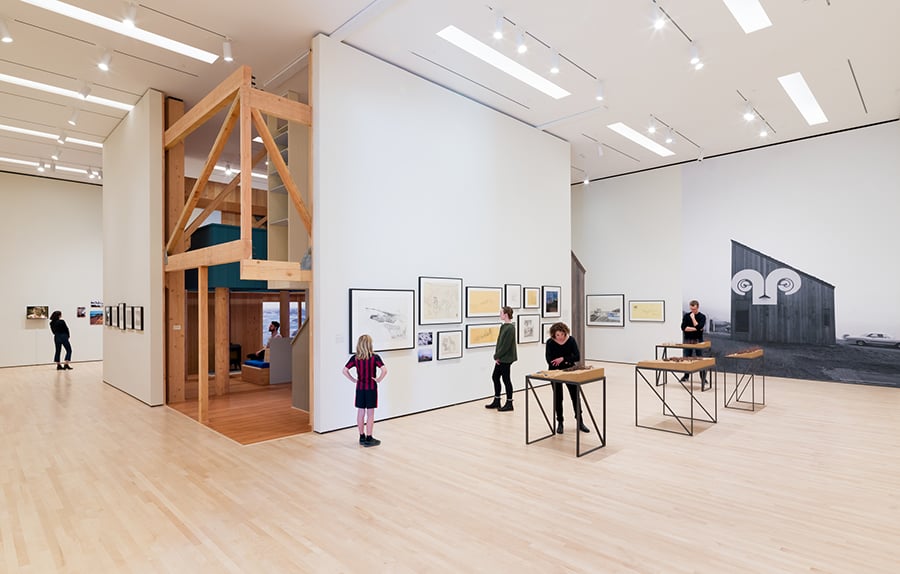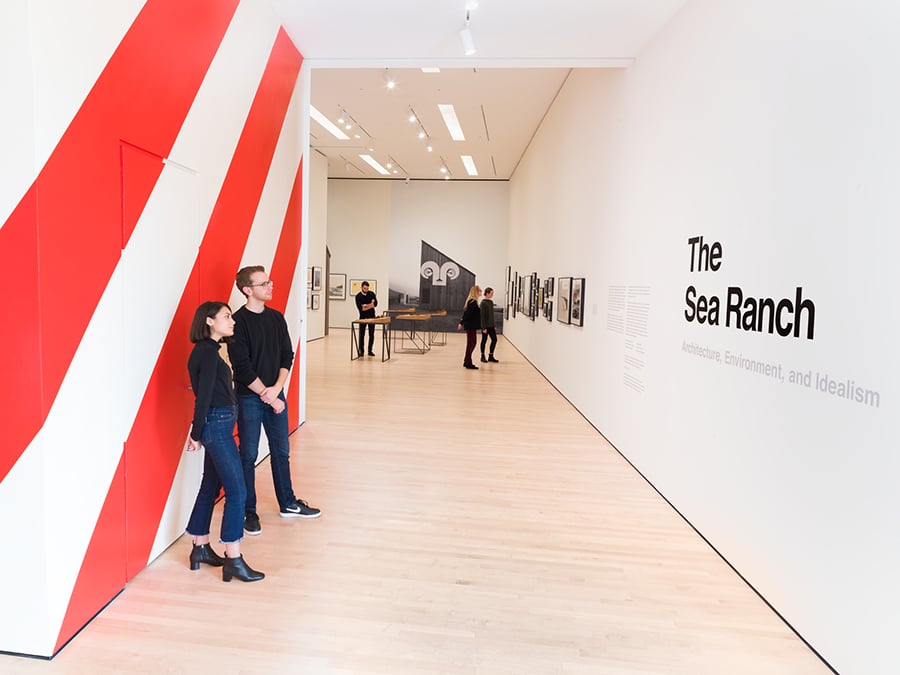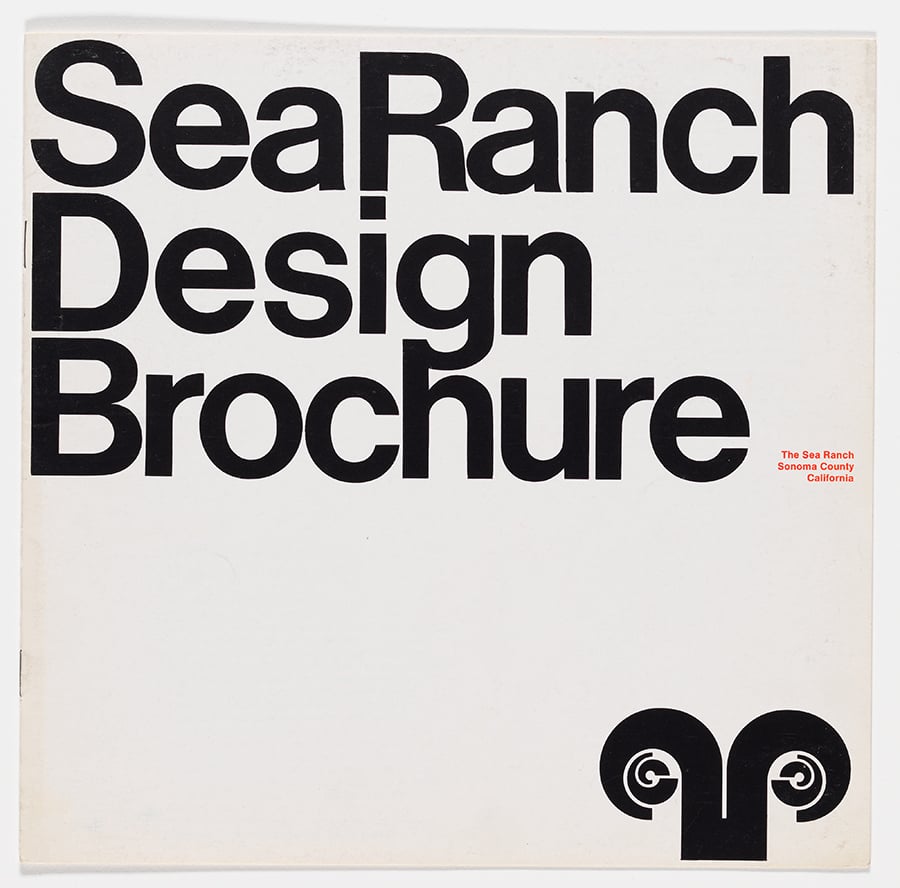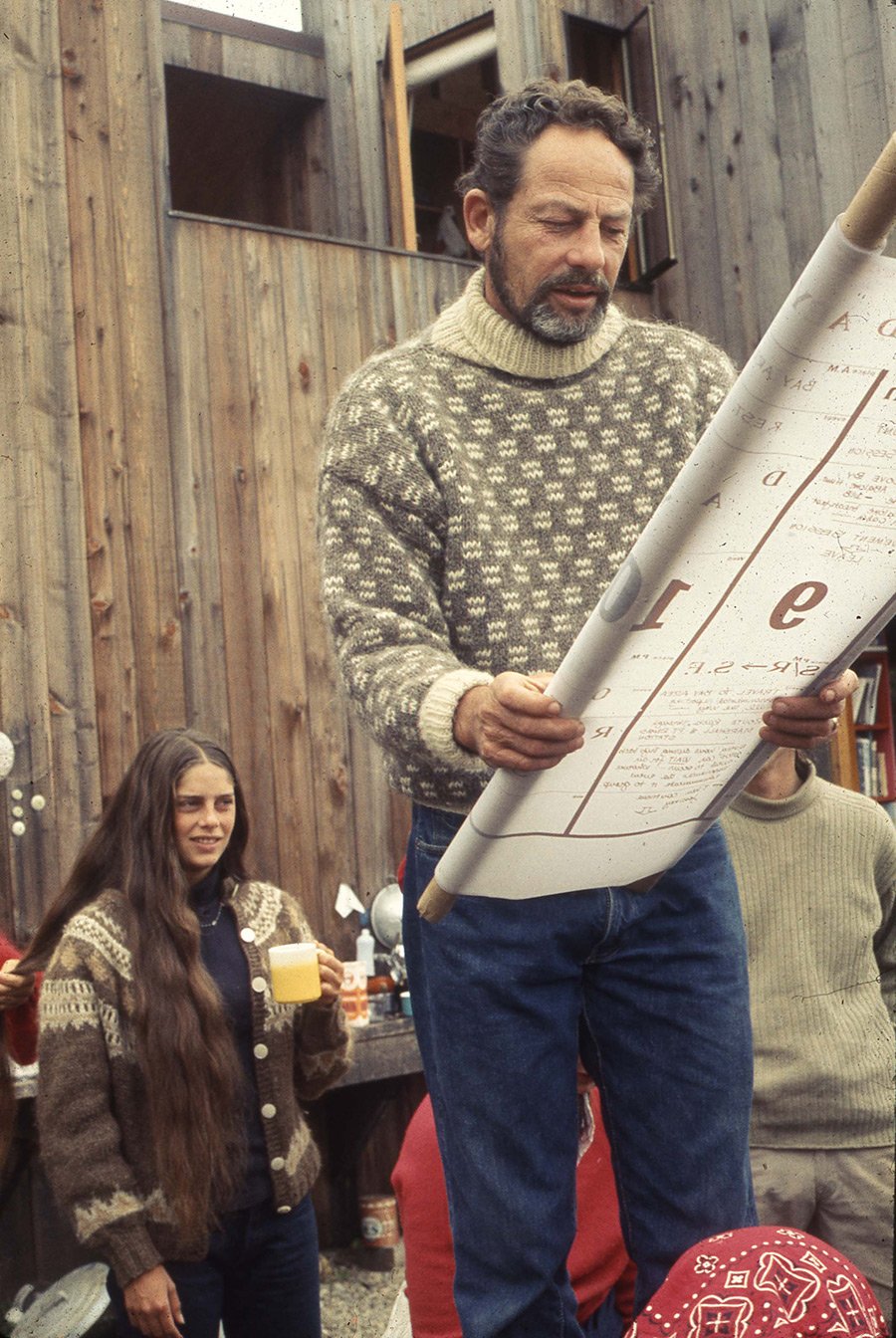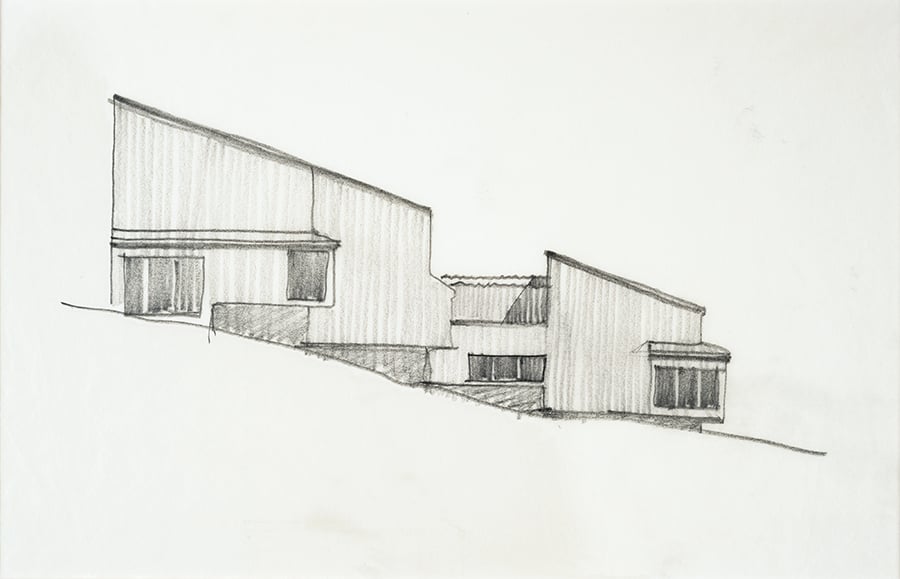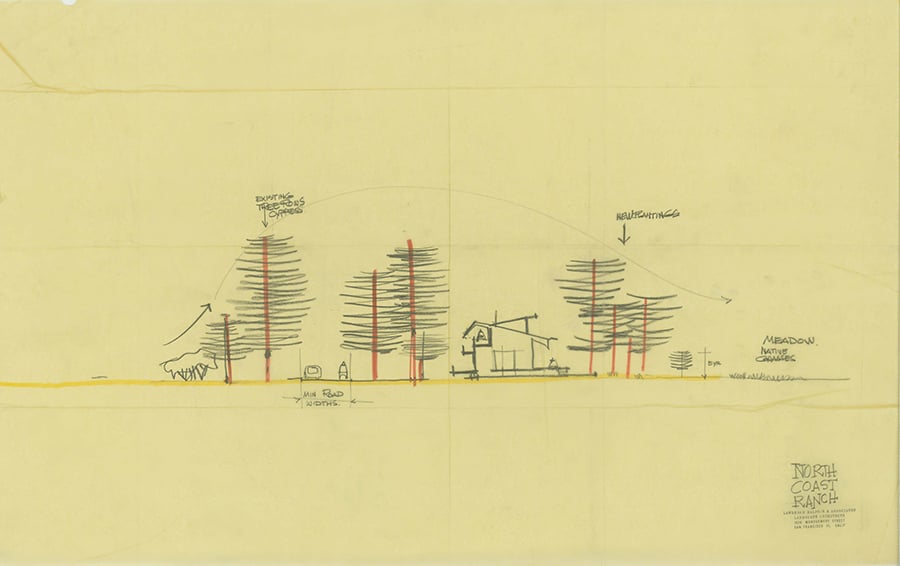
March 14, 2019
Despite Its Oft-Copied Look, the Sea Ranch Still Provides Rich Architectural and Social Lessons for Today
An exhibition at SFMOMA doesn’t dwell on the development’s prehistory and afterlife, but rather tries to recover some of its original sensibility.

For reasons I won’t get into, I spent last fall in a tiny Midwest city, bored and landlocked save for one odd apartment building that cast my mind to the Pacific every time I passed it. However indirectly or superficially, this 1980s multifamily rental—with vertical natural-wood siding, a stark shed roof, and expansive windows—seemed to have been derived from, of all things, the Sea Ranch, the iconic coastal real estate development. Even more curious, though, while it was completely out of sync with the turn-of-the-century surroundings, it wasn’t necessarily a bad fit.
“The California architectural monument of the 1960s,” as historian David Gebhard called the Sea Ranch, is a lesson in the mutability of place with regard to geography. On a ten-mile-long bluff three hours north of San Francisco, a group of mostly Princeton-trained architects, a landscape architect inspired by his time on a kibbutz, and a graphic designer steeped in Swiss rationalism would create a project with such a distinctive identity, so synonymous with California, that it drew international acclaim.
The Sea Ranch: Architecture, Environment, and Idealism, a sharp exhibition at the San Francisco Museum of Modern Art, open through April 28, doesn’t dwell on the development’s prehistory and afterlife. Instead, it tries to recover some of the original sensibility. The curators, Jennifer Dunlop Fletcher and Joseph Becker, have gathered a concise selection of original materials from multiple archives: plans, sketches, scale models, photographs. It’s a bit traditional, but if you know the museum’s architecture collection—past acquisitions have skewed experimental (think Thom Mayne and Lebbeus Woods)—it’s also quietly provocative. A full-scale mock-up of part of the Sea Ranch apartment belonging to MLTW’s Charles Moore, designer of the condominium cluster and the recreation center together with Donlyn Lyndon, William Turnbull, and Richard Whitaker, provides a bit of unexpected drama and, of course, Instagram opps. For good reason: The re-creation captures the uncharacteristic spatial complexity of the interior, with its vaulted ceilings, post-and-beam structure, painted and patterned surfaces, and weird aedicula (a freestanding sleeping loft supported by telephone pole columns). Even without Moore’s eclectic possessions—the Indian wall hangings, Baroque mirror, Oaxacan animal figures, and various other curiosities he famously curated like some learned scavenger—you understand immediately that the Sea Ranch, despite its claim on a certain brand of Bay Area regionalism, is not one-note.
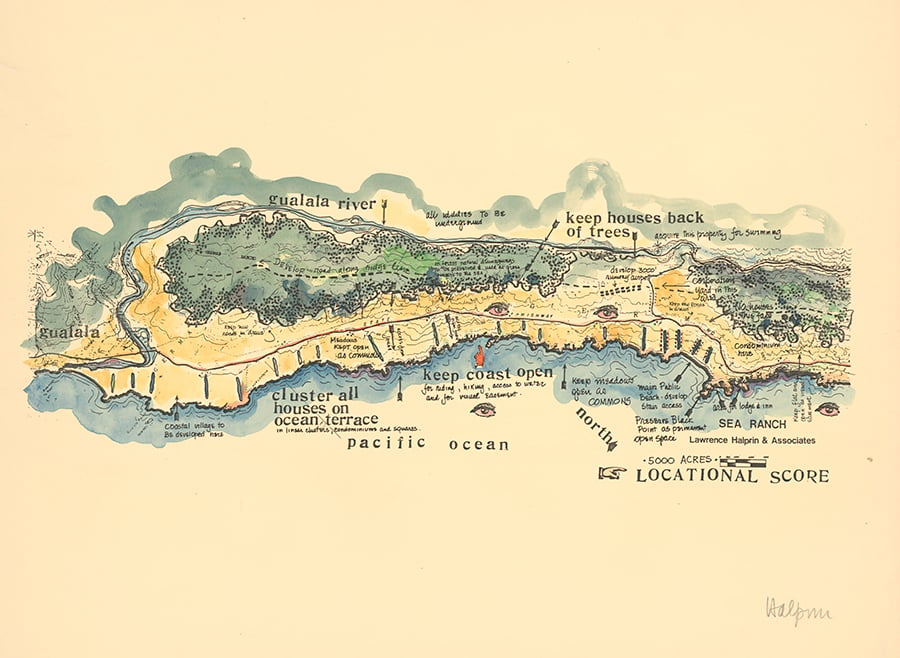
In her catalog essay, Dunlop Fletcher situates the Sea Ranch within a small group of postwar residential developments in California striving to “create a financially viable synthesis of architecture, environment, and idealism,” among them Crestwood Hills in Los Angeles and the North Shore on the Salton Sea. Al Boeke, an architect and developer who had previously overseen the creation of a New Town community in Oahu, Hawaii, for the real estate subsidiary of Dole Pineapple, bet that a segment of the market valued architectural pedigree and a sense of community allied with environmental stewardship, and, accordingly, would tolerate some discomfort. The coastal site he purchased in 1960, a former sheep ranch bisected by Highway 1—with a series of meadows and Monterey cypress trees on one side and a dense redwood forest on the other—wasn’t particularly cozy. As a booklet prepared later for prospective owners disclosed, “the terrain is rugged, the surf treacherous, the ocean cold.” But such was the price of “dramatic beauty,” at least to like-minded liberals after an authenticity of experience and a progressive lifestyle.
Boeke engaged a small army of consultants: foresters, grassland advisers, engineers, attorneys, hydrologists, climatologists, geologists, geographers, graphic artists, and public relations and marketing experts. Landscape architect Lawrence Halprin defined a master plan according to his holistic vision of social and ecological processes. Sea Ranch Ecoscore (1968), a snail shell diagram spanning the Jurassic period to the age of fossil fuel and displayed prominently in the show, positioned the project within a deep history, as part of a dynamic interaction between geology, climate, plants, animals, and human occupation. In practical terms this meant that half the land was to be held in common; most of the meadows would be preserved, with buildings distributed along their edges in dense clusters, rather than in a single oceanfront row. Besides MLTW, then a relatively young firm, the established San Francisco architect Joseph Esherick was commissioned to design a marker building (a beacon directing drivers off the highway), a general store, and a series of six single-family “demonstration houses” dispersed among the cypress hedgerows. Graphic designer Barbara Stauffacher Solomon was responsible for the Helvetica identity and marketing materials, as well as colorful hard-edge murals inside the athletic center. All parties were in agreement that the architecture should play a secondary role. The landscape came first.
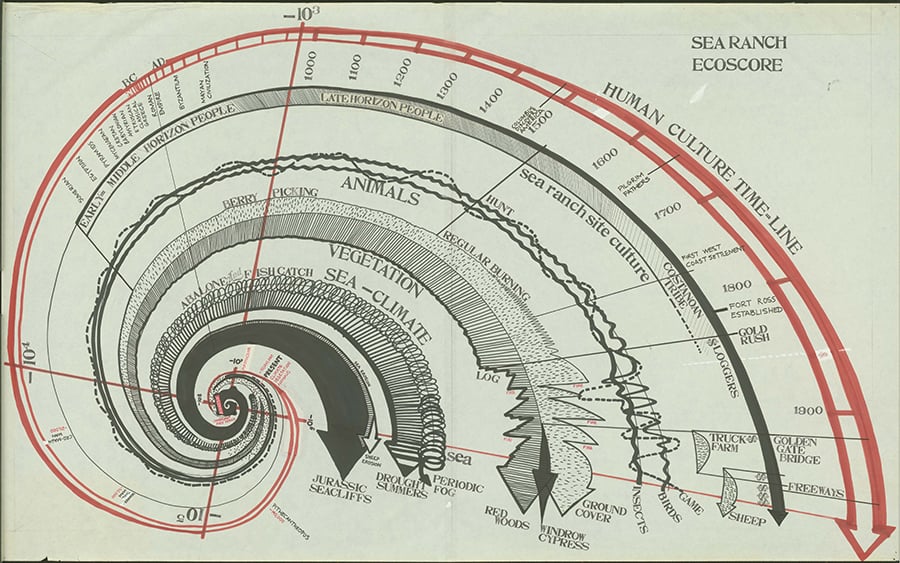
The architects deferred to local vernacular structures without abandoning their Modernist allegiances. The angles of shed roofs nod to the existing barns and the cypress hedgerows while maintaining a degree of formal abstraction. The absence of eaves cuts down on wind resistance and renders sharp silhouettes against the ocean horizon. Esherick’s buildings have their merits, especially the interiors, but MLTW’s Condominium One pushed this architectural language in far more exciting and original directions. Ten condo units were combined into a dense composite of 24-foot cubes differentiated in height and window treatment, as well as by the addition of “saddlebags,” a term for the unique additions of window benches and sunrooms to the core volumes. Heterogeneity and privacy were achieved within an idealistic, even utopian prototype of communal rural living.
If this combination of shed roofs, simple volumes, and untreated wood would come to stand for a style, used and abused near and far, it is in part the project’s own doing. In 1965, a year after the first buildings opened, design stipulations were adopted as part of the Sea Ranch’s covenants, conditions, and restrictions (CC&Rs). A design review committee was instituted to ensure that future changes would conform to the architects’ vision. The rules mandated the form of buildings, but primarily concerned the visual: unpainted, native wood–clad structures; cars obscured by fences; and the express prohibition of flowerbeds and other “suburban” flourishes. In apparently trivial aesthetic details the ideals of the entire community were at stake. Maintenance was a question of freedom.
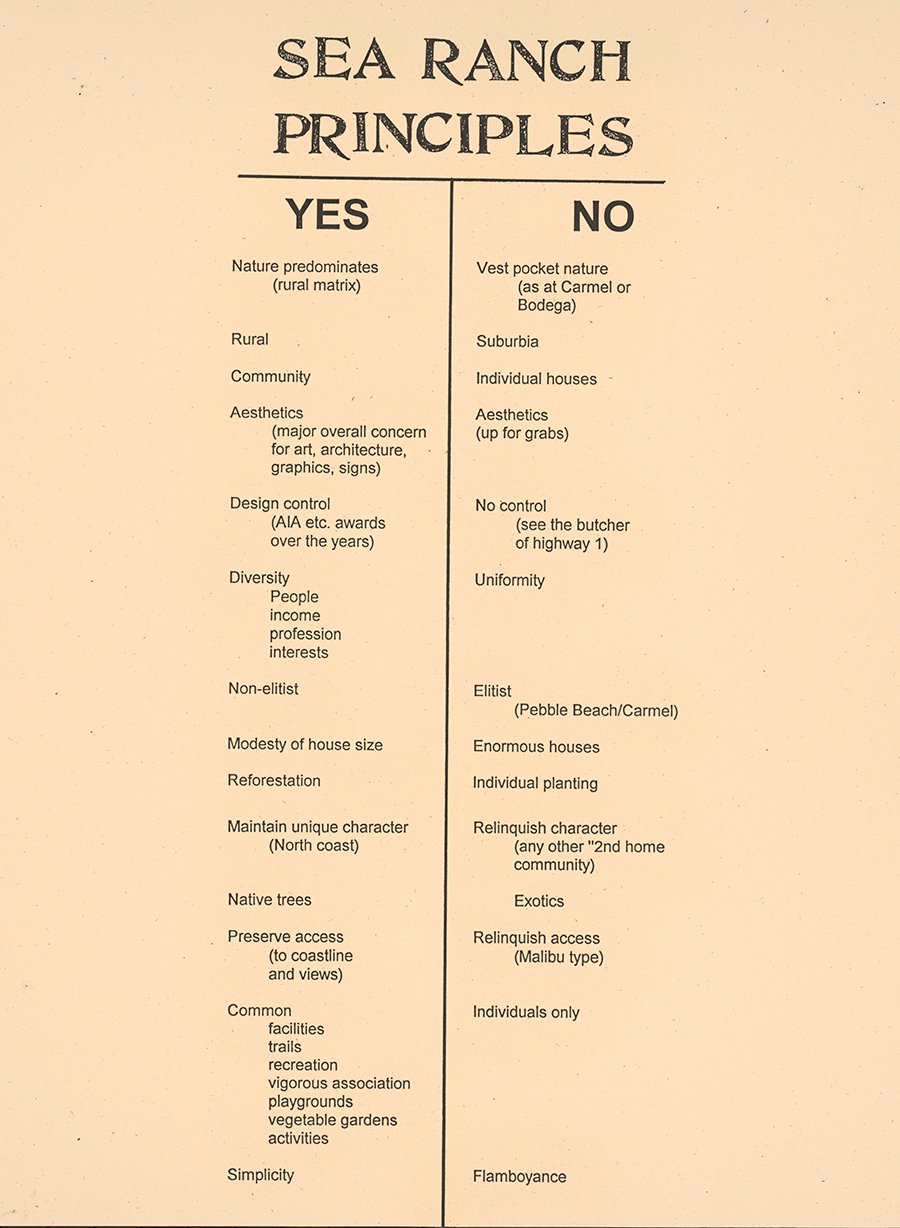
Perhaps the purest distillation of the contributors’ self-understanding is a two-column list of “Sea Ranch Principles” compiled by Halprin. Yes to rural, community, simplicity; no to suburbia, individual houses, flamboyance. “Design control (AIA etc. awards over the years)” was good, whereas “No control (see the butcher of highway 1)” was bad. The virtues of the Sea Ranch, measured against the imprudence of the world, bespeak a self-righteousness that blinded its creators to the perception by outsiders. The Sea Ranch as it was planned, with homes for thousands of inhabitants supported by schools and commercial facilities, never materialized. The California Coastal Commission, responding to inland residents’ fears of limited public oceanfront access, instituted a ten-year construction moratorium in the early 1970s. To recoup some of its investment, the developer pursued wealthy weekenders, not full-time adherents of an alternative mode of semi-communal living. Of some 2,300 lots at the Sea Ranch, about three-quarters have been built out.
What is so fascinating about the Sea Ranch in retrospect is how powerfully it discloses the overwhelming contradictions and profound limitations of architecture as a progressive agent in American society. Even in moments of great aesthetic refinement, ecological sensitivity, and collective aspirations, property interests have the upper hand. Had the Sea Ranch been realized as planned, would it have been any more relevant today? Was it ever really a general model, or successful only in its exceptional character? I’m inclined, after seeing the exhibition, to view the Sea Ranch as an exceedingly productive fantasy. From our current perspective, the enclave is glaringly unsustainable, socially and environmentally. But at least it forces us to ask: What, today, are our ideals?
You may also enjoy “In the U.K., a New Gallery Revives the Spirit of a ’60s Techno-Utopian Town.”
Would you like to comment on this article? Send your thoughts to: [email protected]
Recent Viewpoints
Viewpoints
Google’s Ivy Ross Makes Sense of Color



